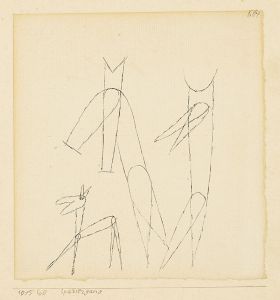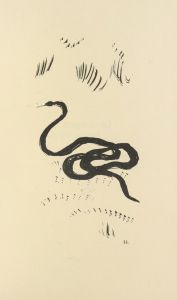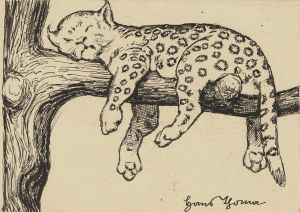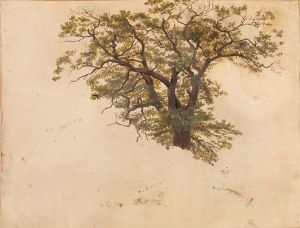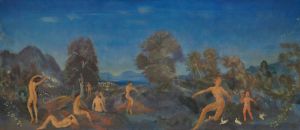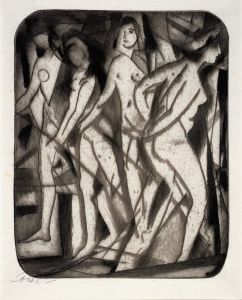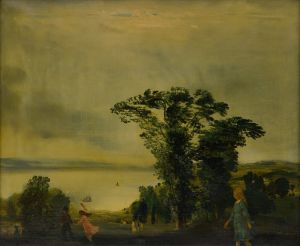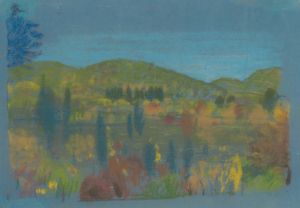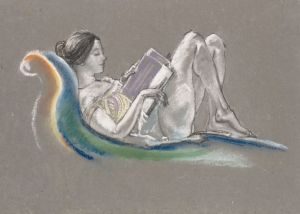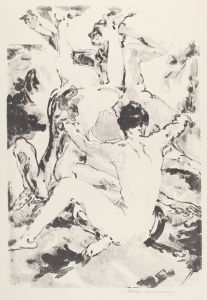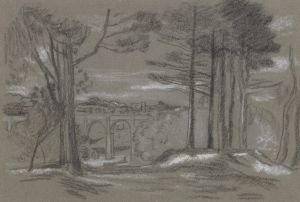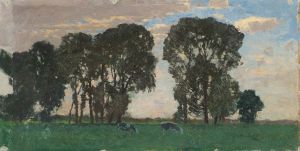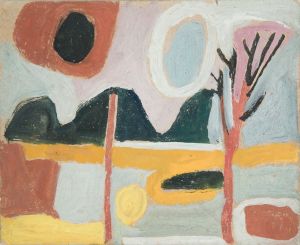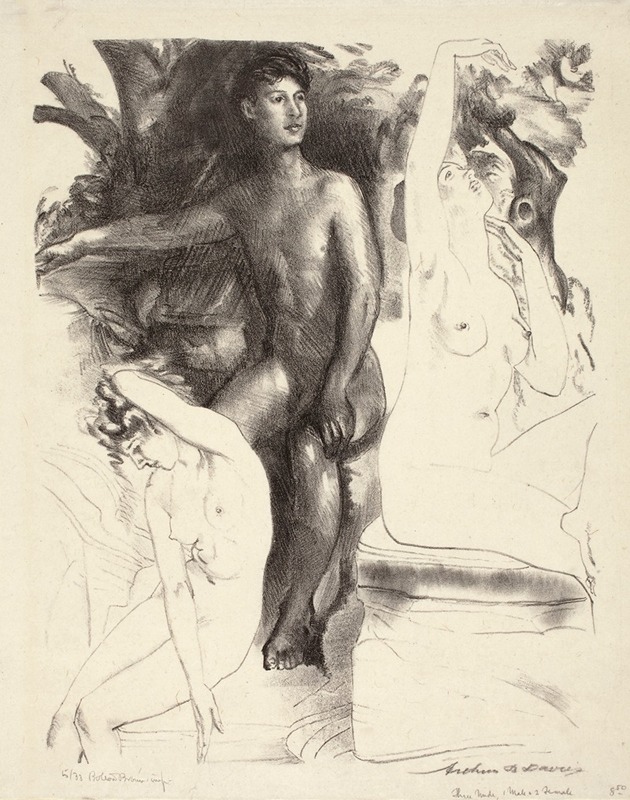
Dominion
A hand-painted replica of Arthur Bowen Davies’s masterpiece Dominion, meticulously crafted by professional artists to capture the true essence of the original. Each piece is created with museum-quality canvas and rare mineral pigments, carefully painted by experienced artists with delicate brushstrokes and rich, layered colors to perfectly recreate the texture of the original artwork. Unlike machine-printed reproductions, this hand-painted version brings the painting to life, infused with the artist’s emotions and skill in every stroke. Whether for personal collection or home decoration, it instantly elevates the artistic atmosphere of any space.
Arthur Bowen Davies was an American artist associated with the Ashcan School and the early 20th-century modernist movement. He was known for his ethereal and dreamlike paintings that often depicted mythological and allegorical subjects. One of his notable works is "Dominion," which exemplifies his unique style and thematic interests.
"Dominion" is a painting that reflects Davies' fascination with the interplay between the natural world and the human spirit. While specific details about the painting's creation, such as its exact date or current location, are not extensively documented, it is known that Davies often explored themes of harmony and tension between humanity and nature in his works. His paintings frequently feature figures in pastoral settings, suggesting a world where the boundaries between reality and fantasy blur.
Davies was a pivotal figure in the American art scene during the early 1900s. He played a significant role in organizing the Armory Show of 1913, which was a landmark event that introduced American audiences to European avant-garde art. This exhibition was crucial in shaping the direction of modern art in the United States. Although Davies' own work was more conservative compared to the radical styles of some of his European contemporaries, his support for the show demonstrated his openness to new ideas and artistic expressions.
In "Dominion," as in many of his works, Davies employed a soft color palette and fluid forms to create a sense of tranquility and otherworldliness. His figures often appear to be in a state of contemplation or reverie, surrounded by landscapes that evoke a sense of timelessness. This approach reflects his interest in symbolism and the exploration of universal themes through art.
Davies' style was influenced by a variety of sources, including classical art, symbolism, and the burgeoning modernist movement. He was known for his ability to synthesize these influences into a cohesive and personal artistic vision. His work often defies easy categorization, as it bridges the gap between traditional and modern art forms.
Despite his contributions to the art world, Davies' work fell into relative obscurity after his death in 1928. However, in recent years, there has been a renewed interest in his paintings, as art historians and collectors recognize the significance of his role in American art history. His ability to convey complex emotions and ideas through simple yet evocative imagery continues to resonate with audiences today.
In summary, "Dominion" by Arthur Bowen Davies is a testament to the artist's skill in blending natural and human elements to create a harmonious and contemplative scene. While specific details about the painting may be limited, its significance lies in its representation of Davies' broader artistic themes and his contribution to the development of modern art in America. Through works like "Dominion," Davies invites viewers to reflect on the relationship between humanity and the natural world, a theme that remains relevant in contemporary discourse.





